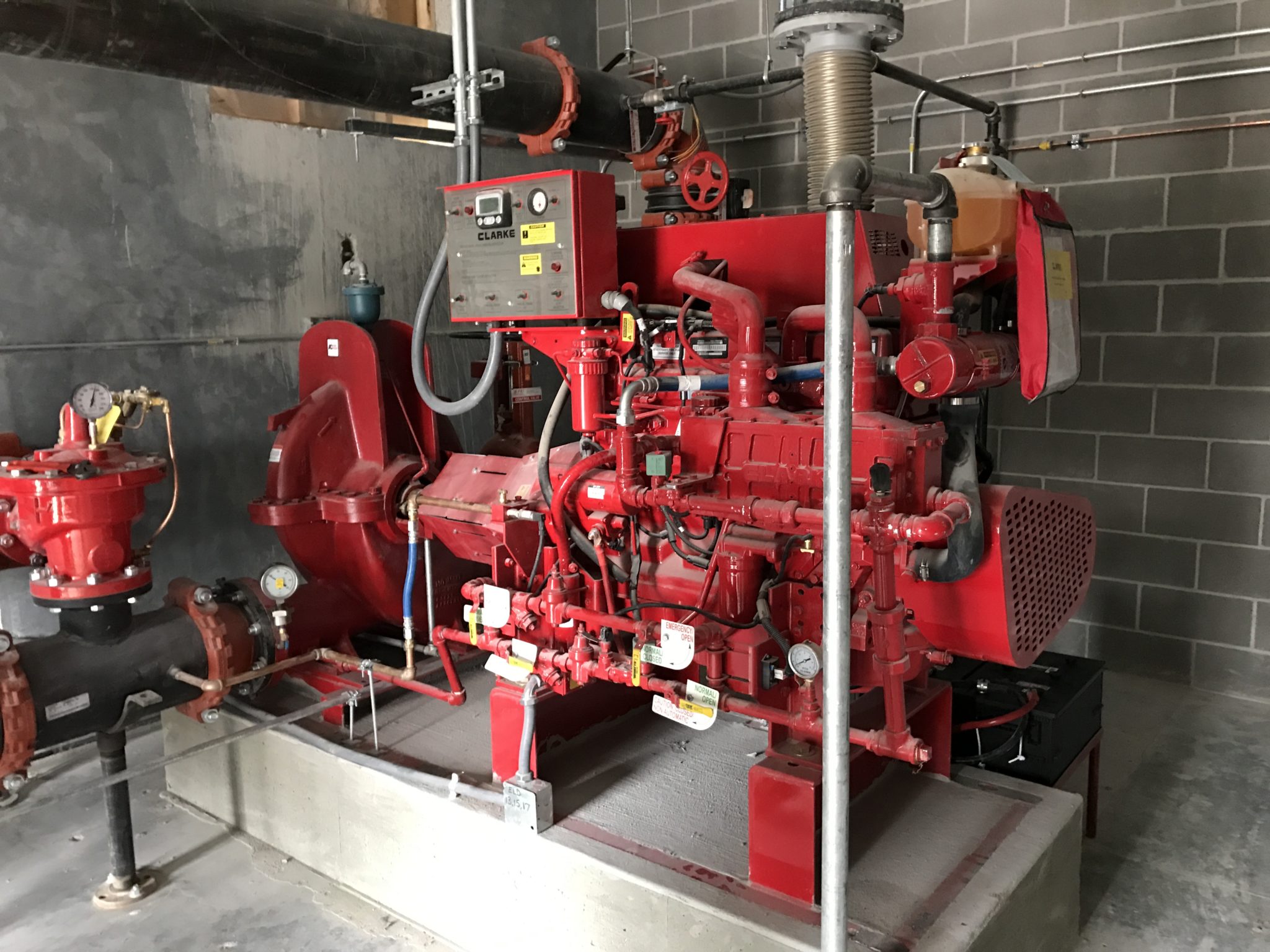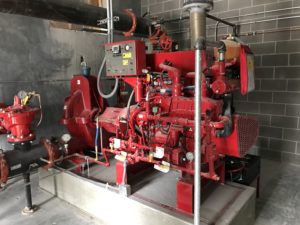
 Fire pumps and associated equipment are required to be periodically inspected, tested, and maintained by NFPA 25: Standard for the Inspection, Testing, and Maintenance of Water-Based Fire Protection Systems. Since the 2002 edition, Chapter 8 of NFPA 25 has been the source for the requirement details of annual fire pump tests.
Fire pumps and associated equipment are required to be periodically inspected, tested, and maintained by NFPA 25: Standard for the Inspection, Testing, and Maintenance of Water-Based Fire Protection Systems. Since the 2002 edition, Chapter 8 of NFPA 25 has been the source for the requirement details of annual fire pump tests.
Annual fire pump testing verifies that your fire pump is performing properly and will be able to respond to a call to service. Regardless of whether you have a diesel or electrically driven fire pump, there are a few things you can do to ensure the annual test is meaningful.
Safety First
Flowing water exerts significant force, which must be safely controlled, directed, and dissipated. If hoses are being used to direct the water discharge, make sure the testing contractor securely anchors them. The hoses should be laid out neatly and anchored in a manner which safely absorbs the force of the water. A device that can be very helpful in this regard is The Hose Monster®, which is a T-shaped device that counteracts the force of the water and provides maximum flexibility in placement of each flowing outlet, allowing the water to safely discharge. Attaching the hoses to play pipes that are properly anchored to a truck or trailer may also allow for safe water discharge. Play pipes attached directly to the pump test header may be another option as long as there is a clear path for the water streams and ground run-off without causing damage to landscape or equipment.
Disposal of Test Water
Some jurisdictions have specific requirements on how to dispose of the test water. Be sure your testing contractor is aware of these requirements and follows them.
Accuracy of Gauges and Other Equipment
The gauges and transducers used during the fire pump test must be accurate within +/-1%. During the annual pump test, your contractor should not use the gauges that are on the pump, as the test data gained from the standard gauges is not accurate enough to identify trends over time. Instead, the contractor should use separate equipment to conduct the test.
The separate equipment, including gauges, transducers, and other measurement equipment, must bear a calibration sticker attesting to calibration within the previous 12 months. The calibration certificates should be available for inspection, as well. An adjustment of the recorded data based on the deviation noted on the calibration certificate will increase the accuracy of the test data and should be done.
In addition, discharge and flow measurement devices should be in good condition and unobstructed to ensure the accuracy of the flow measurement.
You Have the Data – Now What?
The most important and often overlooked portion of an annual fire pump test is the evaluation of the data and comparison to previous annual tests. An evaluation of the test data can identify a reduction in the fire pump’s rated performance, as shown on the fire pump nameplate. To be considered acceptable, the pump shall be capable of supplying the full system demand as provided by the owner. In addition, the performance at each flow and pressure point must not be less than 95% of the nameplate data. When available, the unadjusted field acceptance test data is also an acceptable standard for pump performance.
If the testing contractor turns in a report that has not been evaluated or compared to previous test results, then the process was not completed. Be sure to ask the contractor to submit the report with a comparison of the current test results to previous test results to paint a more accurate picture of your facility’s pump performance.
Where can You Find Out More?
The 2017 edition of NFPA 25 has added numerous important revisions to the annual fire pump testing requirements that can be viewed at www.nfpa.org/25. Even if an earlier edition of the standard is enforced in your jurisdiction, you can require the latest standard be the basis of annual testing at your facility.

